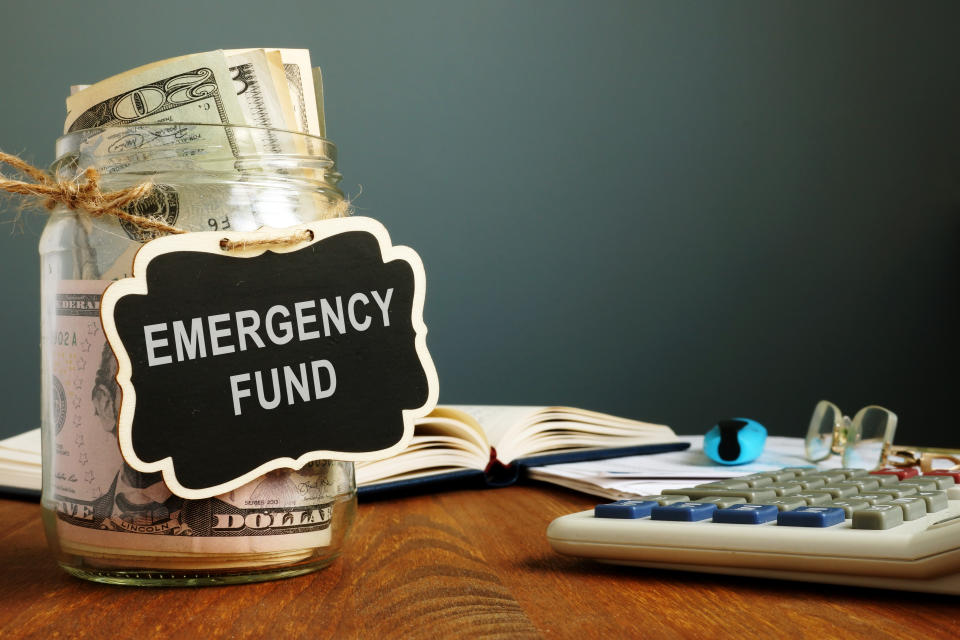Beware of ‘banks’ offering huge interest rates on savings accounts

Over the past few years, a few online savings accounts have offered some truly wild interest rates, well more than the industry leaders like American Express, Synchrony, CIT, Ally, Barclays, and Marcus that currently pay around 0.60% APY per year.
A few have advertised incredible returns like 3% and 4%. But are they legit?
A new report from CNBC looks at a company called Beam Financial that advertised returns between 2% and 4%, with daily equivalent rates up to 7%, but now is facing angry customers who want to withdraw their money but can’t.
It’s not the first time that a too-good-to-be-true situation has turned out to be just that.
Falling rates push people towards risk
As interest rates climbed a few years ago, so did the yields of online savings accounts, many of which paid well over 2% in interest every year — a great deal for a risk-free and liquid investment guaranteed by the federal government.
And consumers benefited as banks competed with each other to offer generous returns. This spring the Fed slashed rates to zero. Since then, savings account rates have fallen significantly leaving people frustrated and looking for better options.
In 2017, a company called Beam emerged, specifically targeted millennials. It had a long wait list, made longer by ads that advertised daily interest rates of up to 7%. Beam’s interest rate fluctuates and is influenced by how much a user interacted with the account in a gamified way using tokens called “billies” that users get from inviting others to the platform.
“The more you invite, the more you earn,” the website reads. The site also says the money is FDIC insured by “member banks.”
According to CNBC, some Beam customers who want to withdraw money can't, and the company reports problems with partners and vendors, spoiling the promised “24/7 access” customers have to their funds.
The FTC is investigating Beam's marketing and CNBC’s contacts with over 50 of the company’s reported partner banks, reporting that 17 of them said they had no relationship. CNBC also reported that while the banks that the company does work with might be insured by the FDIC, Beam — which is not a bank — is not.
Beam told CNBC that they were having technical errors this month and that the customers were their priority, and they expected a fix "as early as" Oct. 30.

The whole report is a mess and you should read it if you’ve ever been curious about maximizing your rainy day fund’s interest rate, because it underscores the fact that promising upstarts might pay more in interest — if they’re legitimate — but might not offer the umbrella a rainy day requires. Even if the company acted with the best intentions, the system simply isn’t working.
The Beam saga is by no means the only one. Earlier this year, the CFPB sued a company called Loan Doctor that was offering a 6% APY account, but was allegedly trading the deposits on the stock market — not something you want your bank to do with your cash.
In 2018, stock-trading app Robinhood announced a checking account with 3% interest for a moment before it turned out to be too good to be true and the company walked it back.
Though some companies do provide services at a loss to get market share, often subsidized by venture capital, this just doesn't seem to work out in the savings account industry.
What you should do
Often, high-yield savings accounts are meant for emergency funds and the interest is something to offset inflation more than anything else. The goal is liquidity, access, security, stability, just as much as a high interest rate. So experts say the risk just isn’t worth it.
“Online savings accounts and rewards checking accounts are the best thing going for money you might need at a moment’s notice,” ays Greg McBride, chief financial analyst at Bankrate. “But even here, yields are as low as they’ve ever been so check your expectations at the door.”
The best practice, according to McBride, is to ignore when you see dollar signs and crazy-high APYs and to do your research — and not simply sign up for an account when you see the letters FDIC in the marketing materials.
“Make sure you are dealing directly with the federally-insured bank or credit union and are not going through a third-party,” said McBride. “This is the safe part of your portfolio so any exposure to risk – even a small one – in the pursuit of a higher return isn’t worth it.”
McBride has been offering this advice for a long time. In fact, in a Forbes article from 2017, he was quoted outlining the importance of these questions, in response to questions about a new upstart — Beam.
“It's curious to me that they'd start to publicize themselves before they can disclose this information because it's an obvious first question,” McBride said at the time.
The moral of the story? If something is “curious” to you, be careful.
—
Ethan Wolff-Mann is a writer at Yahoo Finance focusing on consumer issues, personal finance, retail, airlines, and more. Follow him on Twitter @ewolffmann.
63% of Americans have concerns about a coronavirus vaccine: Poll
Government should collect wealth data just like income: Berkeley economists
Robinhood investors were a market-stabilization force during the pandemic crash
Intergenerational conflict is getting worse, Deutsche Bank warns
NYU professor: Make sure young investors 'don't become addicted' to online stock trading